Sony Bravia 9 vs Samsung QN90D: Which Mini-LED TV wins?
They're each lovely to look at, but these two TVs are hiding some big differences

The Sony Bravia 9 and the Samsung QN90D are two of the best Mini-LED TVs of the year, which puts them among the best TVs you can buy right now, period. But while they share a display type and carry many of the same features, their differences pile up pretty quickly.
If you're going to spend a decent chunk of change on a high-end TV, it's important to understand what sets them apart. Having sized up both TVs personally, I'm here to break it all down so that you can make the right call.
Sony Bravia 9 vs Samsung QN90D: Specs compared
| Sony Bravia 9 | Samsung QN90D | |
|---|---|---|
| Sizes | 65", 75", 85" | 43", 50", 55", 65", 75", 85", 98" |
| Ports | 2 HDMI 2.1, 2 HDMI 2.0 | 4 HDMI 2.1 |
| Resolution | 3,840 x 2,160p | 3,840 x 2,160p |
| HDR | HDR10, HLG, Dolby Vision | HDR10, HLG, HDR10+ |
| Smart TV software | Google TV | Tizen OS |
| ATSC 3.0 support? | Yes | No |
| Processor | XR Processor | Neo Quantum 4K AI Gen 2 |
Sony Bravia 9 vs Samsung QN90D: Design
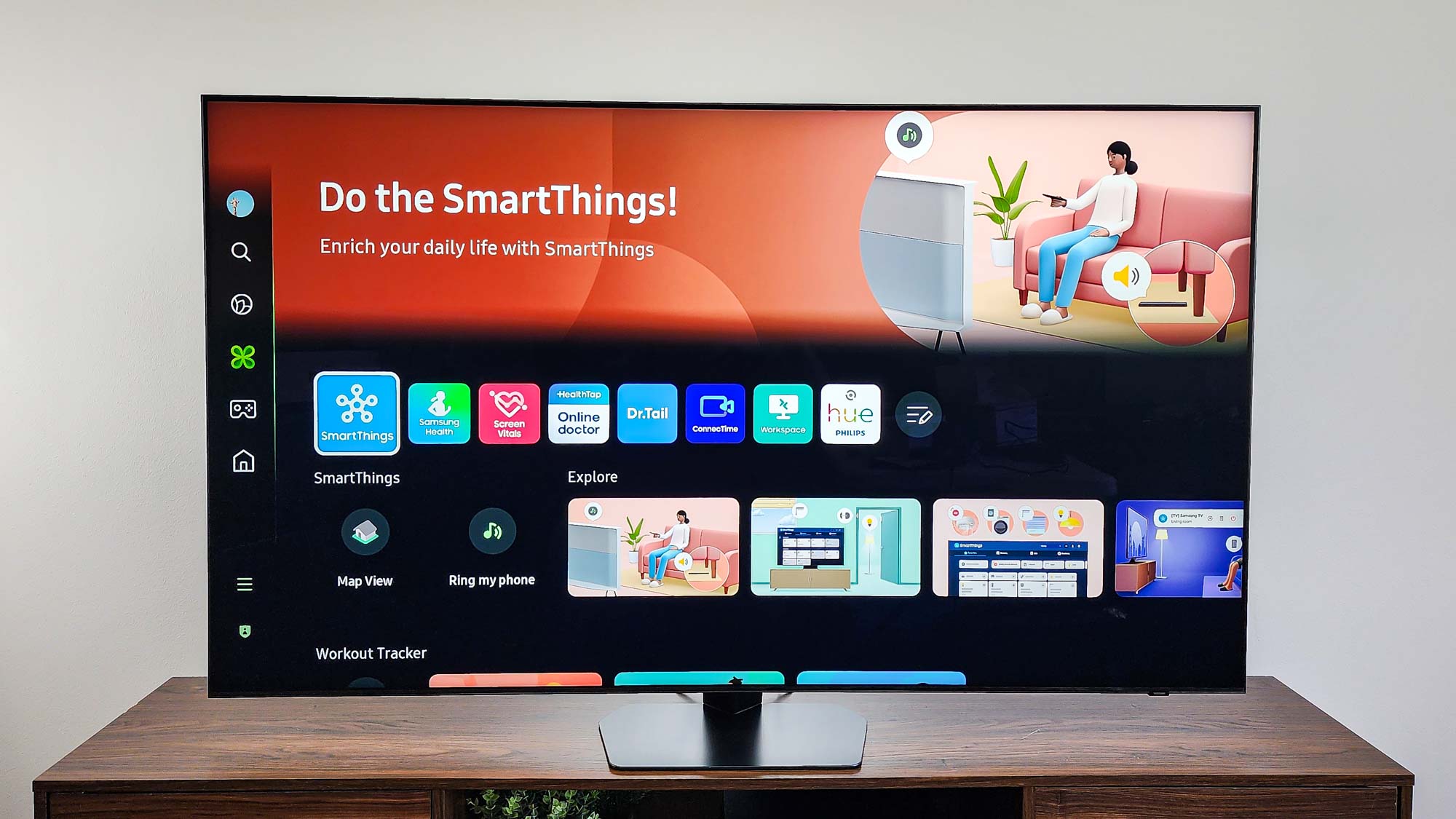
The Bravia 9 and QN90D both feature fantastic fits and finishes worthy of their higher-end price tags. They do, however, make use of different components.
The QN90D comes with a heavy, metal plate for its stand, which connects to the back of the panel by way of a wide, sturdy neck. This leaves the QN90D with a slight wobble, but not severe enough to be wince-inducing. The panel itself is sleek-looking, its rear side consisting of a uniform, aesthetically pleasing brushed texture. Given the height of the stand, there is plenty of room for a soundbar to fit in front of the TV without obstructing the screen.
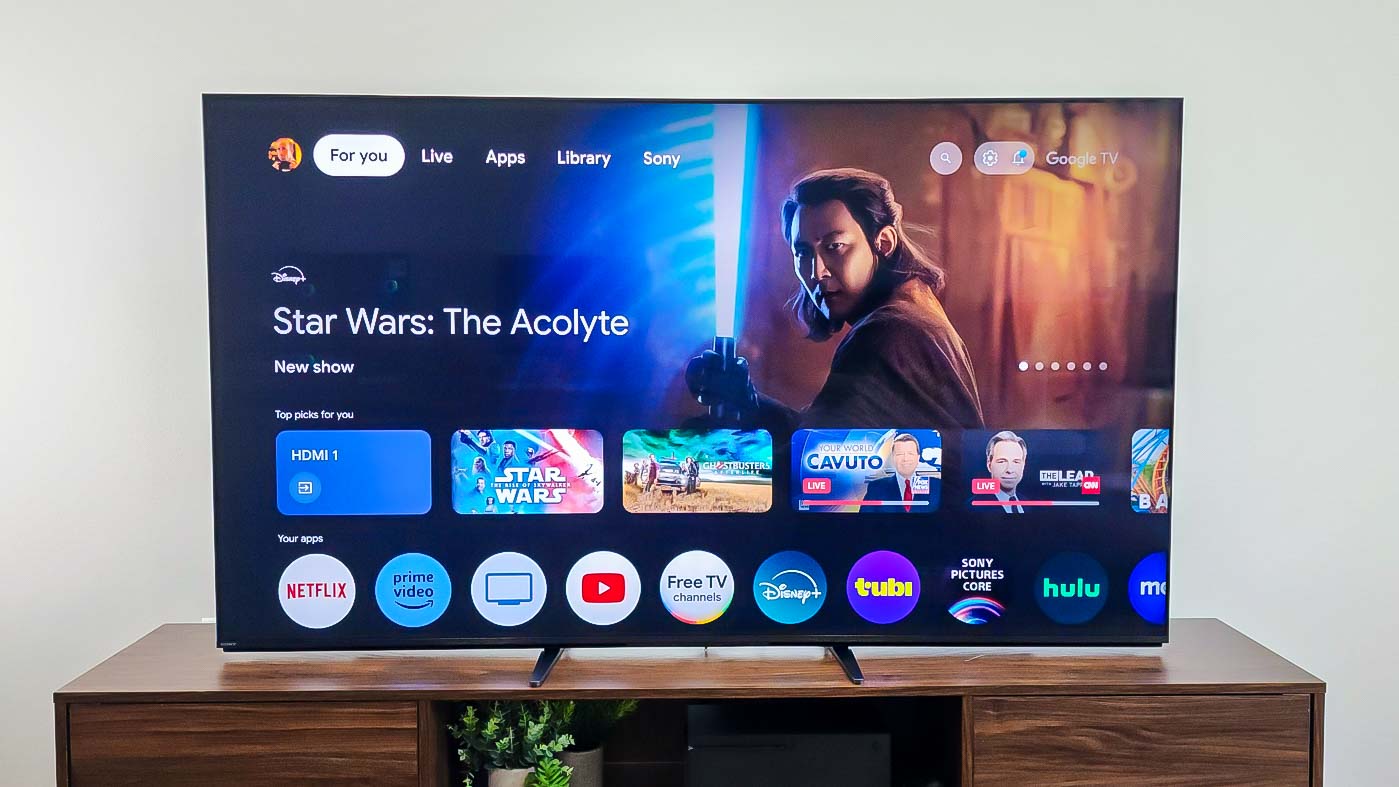
The Bravia 9, on the other hand, is propped up by a pair of T-shaped feet rather than a pedestal-style stand. These narrow, pointed feet can be positioned either alongside the corners of the panel or closer to center, depending on your preference or the width of your media console. They can also be attached in an alternate orientation that lifts the panel higher. This brings the total number of stand configurations to four, with two of those options granting ample soundbar clearance.
Both the Bravia 9 and the QN90D are attractive TVs with accommodating designs, but the Bravia 9 offers more flexibility with its varied stand options.
Winner: Sony Bravia 9
Sony Bravia 9 vs Samsung QN90D: Performance
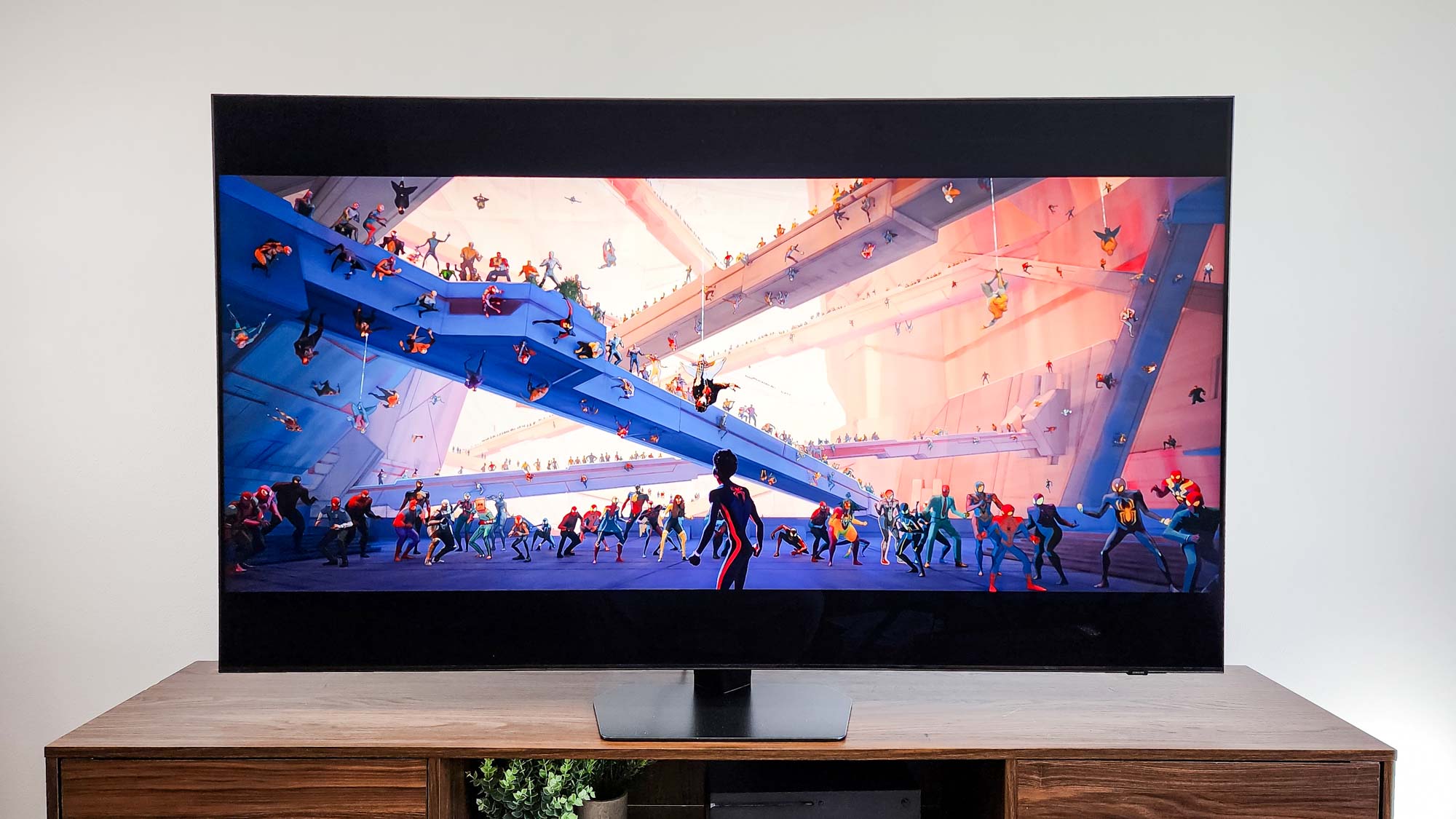
Mini-LED TVs leverage an array of ultra-small LEDs to achieve brighter highlights and tighter contrast control than standard LED TVs. Hardware isn't everything, though; there can be big differences in how one Mini-LED TV performs compared to another.
They both do a remarkable job at keeping bright-on-dark objects free of light bloom (though some is likely to be visible when you're seated off to the side).
Fortunately, Sony and Samsung have established a successful track record in this space. The Bravia 9 and QN90D each come from a long line of top-tier Mini-LED TVs, and their performance follows suit. They both do a remarkable job at keeping bright-on-dark objects free of light bloom (though some is likely to be visible when you're seated off to the side).
If you take a look at the test data we've gathered, you'll start to notice significant differences between the two. The QN90D offers higher SDR brightness out of the box, so for the most part, everyday content like cable, most streaming shows, and over-the-air broadcasts will hold up better on the QN90D during the day.
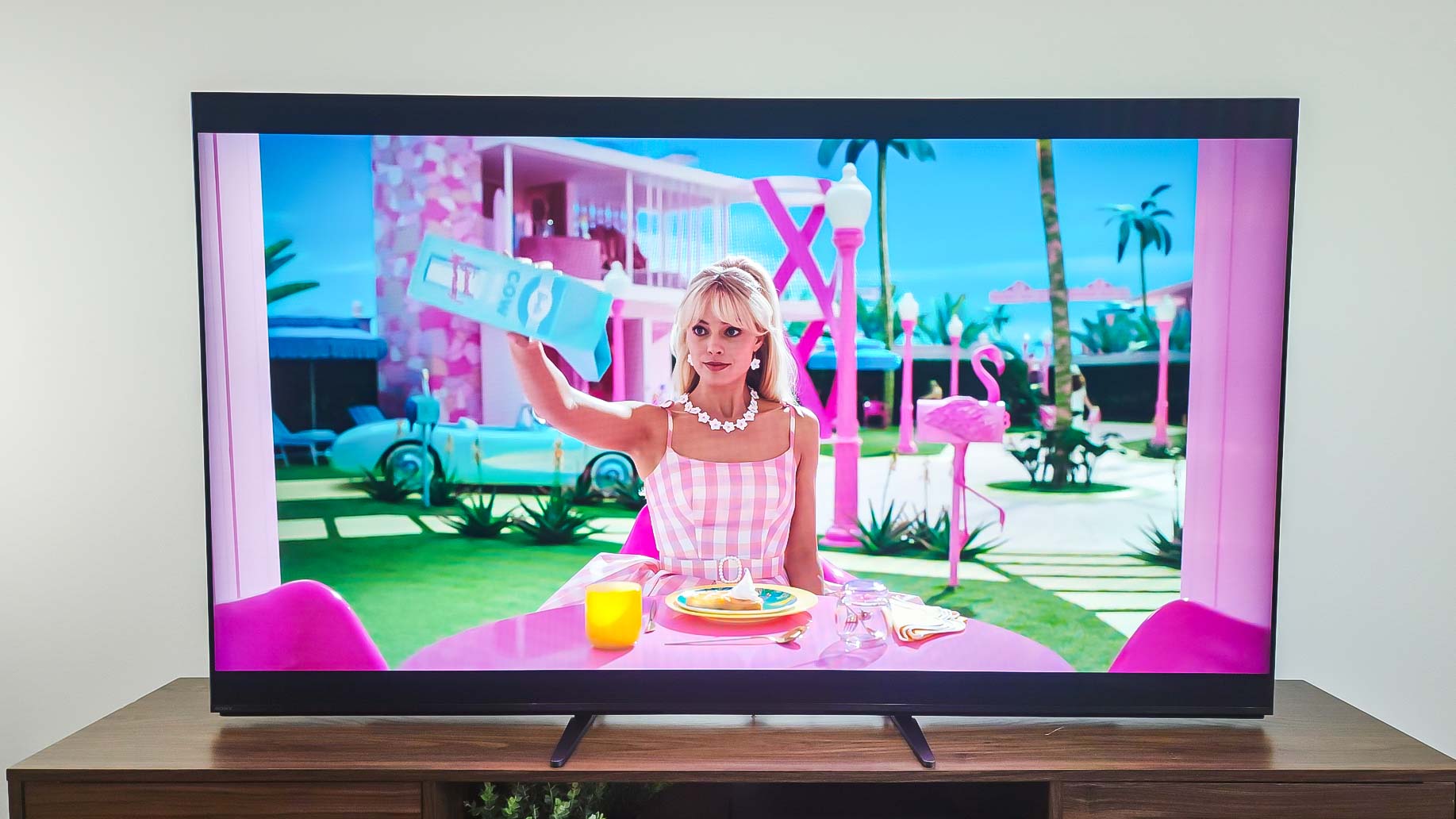
In HDR, however, the Bravia 9 has a slight edge
In HDR, however, the Bravia 9 has a slight edge — at least when it comes to small, brief specular highlights, like a bolt of lightning or a sharp reflection of sunlight. On a 10% white window in HDR, the Bravia 9 measures in at around 2,700 to 2,800 nits. On the QN90D, that measurement is closer to 2,000.
Sony's sensational out-of-the-box performance is another point in its favor; they're both quite sharp in their most-accurate picture modes, but the Bravia 9 is about as close as a TV gets to reference accuracy without a proper calibration. The Bravia 9 also delivers wider HDR color volume than the QN90D (though Samsung is no slouch in this department).
The biggest difference between the two TVs has to do with their features. The Bravia 9 supports Dolby Vision (the most prolific of the enhanced HDR formats), but like all Samsung TVs, the QN90D does not. Instead, it supports HDR10+, the royalty-free Dolby Vision alternative that works in largely the same manner. Dolby Vision content is splashed all over Netflix, Apple TV+, and Disney+, just to name a few. You'll still be able to watch those titles in HDR on the QN90D, but they won't be taking advantage of Dolby Vision mastering. To learn more, check out our guide to figuring out whether or not you actually need Dolby Vision.
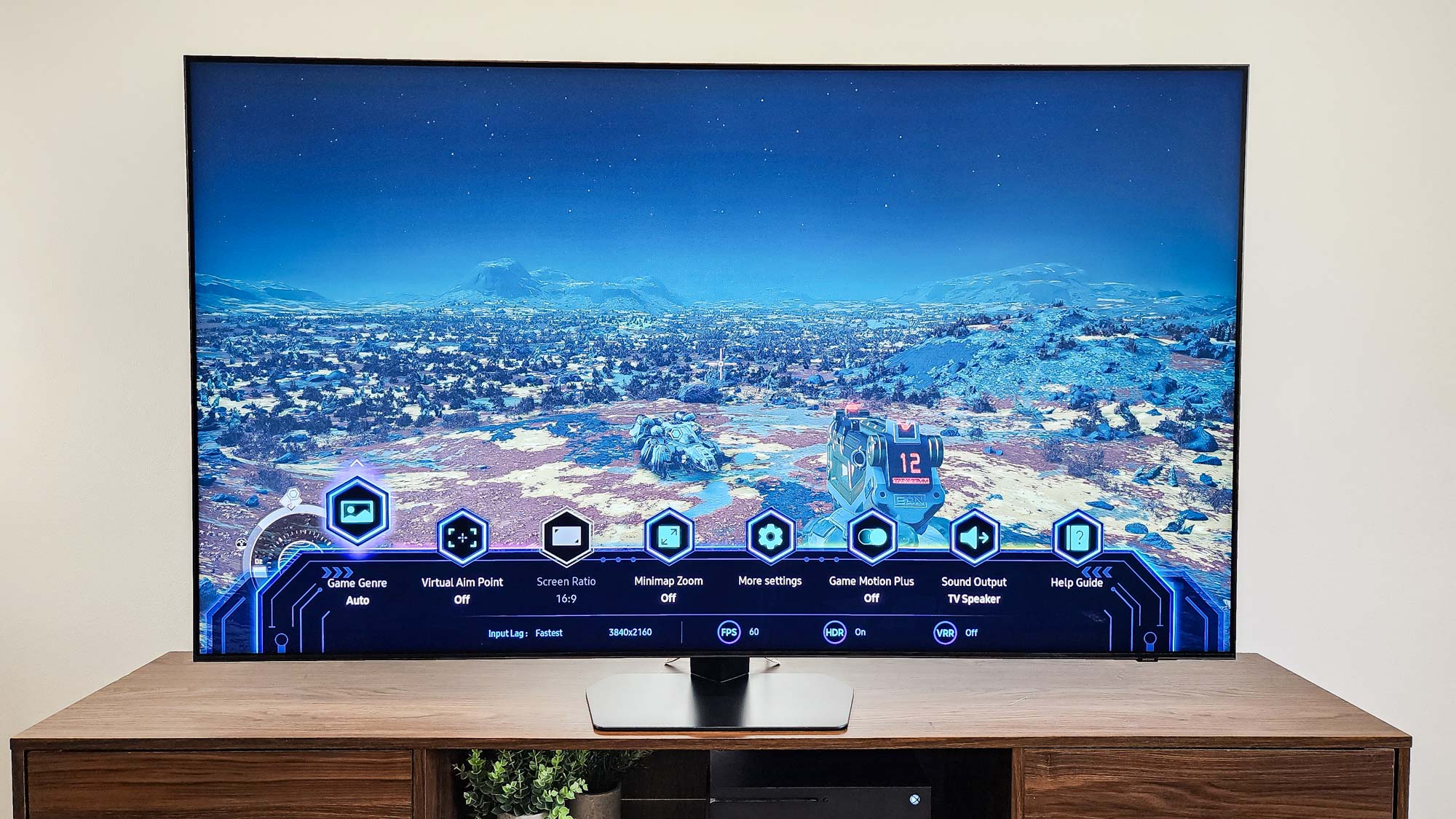
The Samsung QN90D has a significant leg up on the Bravia 9 when it comes to gaming features, though
The Samsung QN90D has a significant leg up on the Bravia 9 when it comes to gaming features, though. All four of its inputs are of the HDMI 2.1 variety, which means that they all support 4K gaming at 120Hz, Auto Low Latency Mode (ALLM), and Variable Refresh Rate (VRR). They also support a 144Hz signal, should you decide to connect a PC.
The Bravia 9, unfortunately, is limited to just a pair of HDMI 2.1 inputs, and one of them pulls double duty as the TV's dedicated eARC port. It still supports 4K gaming at 120Hz, ALLM, and VRR, but only across those two inputs. If you're planning on using that eARC port for a soundbar, the Bravia 9 only offers one input for high-bandwidth gaming.
From a performance standpoint, the QN90D is better-equipped for gaming and average, everyday use, while the Bravia 9 is perfectly fine for everyday use, but truly shines when the lights are off for movie night. It lags behind the QN90D as a gaming machine, but outshines the QN90D when it comes to out-of-the-box accuracy and picture processing.
Winner: Draw
Sony Bravia 9 vs Samsung QN90D: Outlook
If you're a dedicated gamer, the decision is close to being made for you, as the QN90D is far and away the better gaming companion. The gaming aspect (as well as its brighter SDR performance) makes it a more versatile TV in general. It will even satisfy those who value accuracy.
But true home theater enthusiasts might be better off leaving some gaming features on the table for the sake of getting their hands on Sony's super-accurate Professional picture mode, not to mention the deep toolbox of A/V settings that Sony TVs are known for. For these folks, the QN90D's lack of Dolby Vision might also be a deal-breaker.
Whichever you happen to land on, you can rest comfortably with the knowledge that you're welcoming one of the best LED TVs of the year into your home.
Sign up to get the BEST of Tom's Guide direct to your inbox.
Get instant access to breaking news, the hottest reviews, great deals and helpful tips.

Michael Desjardin is a Senior Editor for TVs at Tom's Guide. He's been testing and tinkering with TVs professionally for over a decade, previously for Reviewed and USA Today. Michael graduated from Emerson College where he studied media production and screenwriting. He loves cooking, zoning out to ambient music, and getting way too invested in the Red Sox. He considers himself living proof that TV doesn't necessarily rot your brain.
